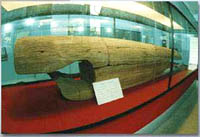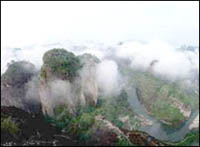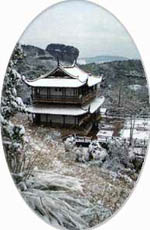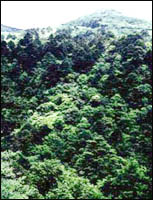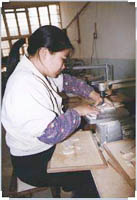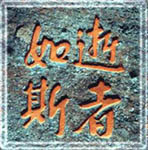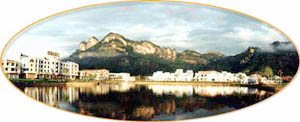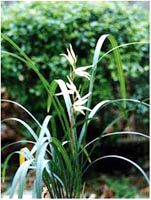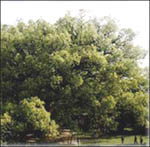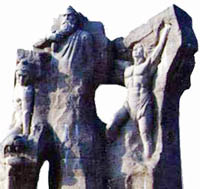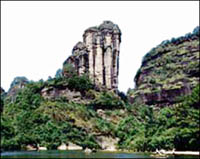History Wuyishan
Wuyishan City has a long history. Before the Qin (221-206 B.C.) and Han (206 B. C.-A. D. 25) dynasties, the city was under the jurisdiction of the State of Yue, in Southeast China. According to ancient records and archeological evidence, the site of the city was inhabited more than 4,000 years ago. "Boat-shaped Coffins" suspended from cliffs, said to be some 3,800 years old, can still be seen. After Emperor Qin Shihuang conquered Yue, |
|
he set up Minzhong Prefecture, and a city on the site of present-day. Wuyishan was founded as a border city. In the fifth year of the Chunhua reign period of the Northern Song Dynasty (994), the area was named Chong'an County, and in the Yuan Dynasty (1279-1368) Chong'an County came under the jurisdiction of Jianyang Lu. The area became well-known when the leading philosopher Zhu Xi gave lectures in Ching'an, where he resided for some time. In 1989, Chong'an County was re-named Wuyishan City.
Geography Wuyishan
|
Located at the foot of the southeastern slope of Huanggang Mountain, the main peak of the Wuyi Mountains, Wuyishan City sits on hilly land consisting of red gravel rocks, with an elevation of about 400m. The highest peak exceeds 700m. With an area of 60sq km, Wuyishan City lies between latitudes 27o35´-27o43´N, and longitudes 117o55´-118o01´E. |
The city boasts unique natural scenery of bluish-green waters and reddish hills. The physiognomy of Wuyishan is typical Danxia Landscape. The peaks of the Wuyi Mountains are vivid, elegant and grotesquely shaped. Of them, Danxie Hill is of Particular attraction.
Climate Wuyishan
Located close to the tropic of Cancer, Wuyishan City has a sub-tropical, humid monsoon climate. The high mountains to the northwest of the city keep off cold air from the north in winter, and block warm and humid air currents from the ocean in spring and summer. Hence, the city has a warm, fresh and cool climate, with an average annual temperature of 17.9?. July is the hottest month of the year, when the average temperature is about 27?. January is the coldest month, when the average temperature is about 8?. The city is suitable for tourism all the year round. Wuyishan City has much rainfall, with a mean annual precipitation of around 1,900mm, concentrated in spring and summer. It has 150-160 rainy days and about 110 foggy days a year. |
|
In early spring, Wuyishan City is Very pretty, with green mountains, clear waters and colorful flowers, in addition to the delicate scent of birch trees. In summer, the city is a pleasant resort, with densely growing trees, murmuring streams, and cool winds. In the clear and crisp autumn, the city boasts red maple leaves and camellias in full bloom, making people feel relaxed and happy. In winter, beautiful plum blossoms and green pine trees form a lovely picture. The scenery of the mountains is changeable at different times of the day, and is particularly appealing on windy, rainy or snowy days.
Natural Ecological Environment Wuyishan
|
Wuyishan City has an extremely fortunate natural ecological environment, its forest coverage rate being 53 percent. In the Wuyishan National Tourist Attraction Area, the forest coverage rate reaches 65.3 percent, and 98 percent of the Wuyishan National Nature Reserve is covered by forests. The quality of its air and water greatly exceeds the state's standards. Tourism plays a leading role in Wuyishan's economy. The setting up of industrial projects which may harm the natural environment is forbidden here. When the Chairman of the Executive Board of the World Tourism Organization visited Wuyishan, |
she said, "Unpolluted Wuyishan is a good model for the world environmental protection." Dr. Moroy of UNESCO World Heritage Committee once claimed, "Wuyishan is the everlasting symbol of Chinese natural resources which can be applied continuously."
Economy Wuyishan
Wuyishan City mainly relies on its export-oriented economy, and tourism is its pillar industry. Every year, the revenue contributed by tourism makes up more than one third of the city's total. By relying on its rich bamboo, timber, rock tea and granite resources, it has formed a series of sturdy industries mainly serving tourism, including the production of tourist arts and crafts, processing of bamboo and forest products, making fine rock tea and quanying granite. Wuyishan City is also a commodity grain base and key forest area,as well as a famous tea producer in China. Its agriculture has constantly been optimized along with the development of tourism, |
|
and its grain, timber, tea, bamboo products, flowers and vegetable sectors are thriving.
Culture Wuyishan
Wuyi Mountains is a famous cultural mountain with a long history. Since the Qin and Han dynasties, it has been held in
|
great esteem, and in the Tang Dynasty (618-907), it was named a famous mountain by the Court. It was reputed to be the location of the "No.16 Cavern" by the Taoists, and of the "Cavern of Idealist Philosophy in the South" in the Song Dynasty (960-1279). Zhu Xi, a scholar who created Neo-Confucianism during the Southern Song Dynasty (1127-1279), installed himself in the "Wuyi Best Cottage" here, where he gathered his disciples, gave lectures and wrote books, thus turning it into a cultural and academic center in Southeast China. |
Many men of letters, such as Li Shangyin, Lu You, Xin Qiji, Liu Yong, Xu Xiake and Qi Jiguang toured Wuyi Mountains, leaving more than 2,000 immortal articles and poems in the area. Wuyi Mountains has numerous unique historical sites, such as the boat-shaped coffins of the Shang (ca. 16th-11th century B.C.) and Western Zhou (11th century-771B.C.) dynasties, the ruins of an ancient city of the Han Dynasty, the ruins of the Ziyang Academy, the ruins of the 10,000 Year Palace, Cheng Village the Xiamei Building Complex of the Qing Dynasty, the Yongle Buddhist Temple, the Taoyuandong Taoist Temple, the Zhizhi Nunnery, Yuqing Bridge and ancient cliff carvings. There is a wealth of folk takes about the mountain. Scholar Cai Shangsi wrote a poem: "Eastern Zhou gave birth to Confucius, and Southern Song, to Zhu Xi. China's ancient culture is represented by Tai Mountains and Wuyi Mountains."
A Survey of Tourist Industry Wuyishan
Wuyishan City is the only tourism city named after a famous mountain in Fujian Province. It is rich in tourism resources, with unique scenic spots and many historical sites. It has a state key scenic area, key nature reserve, key tourist resort, first-class airport, and the ruins of the ancient city of the Han Dynasty at Chengcun, which is included in the fourth category of historical monuments and cultural relics under state protection. Thanks to its unique geographical location, the Chinese Government has given it approval to set up examining port organizations such as customs and border, commodity, animals and plants, and hygiene supervision bodies. With the approval of the General Administration of Customs, the Wuyishan Bonded Warehouse Zone has been set up here.
Depending on its abundant natural resources and historical sites, and the preferential policies offered by the State and Fujian Province, Wuyishan City has success fully implemented the strategy of "developing through tourism, supported by environment protection, |
|
enriched by opening up and strengthened by science and education" since the Eighth Five-year Plan period (1990-1995),thus getting rid of the traditional agricultural county economy barrier and setting up a brand-new pattern for its tourist economy with Wuyishan characteristics. Since then, the city's economy has developed rapidly, and its tourism sector has expanded constantly. Especially since it started to turn itself into "Top Tourist Cities of China", Wuyishan has paid great attention to the improvement of tourism infrastructure facilities, the construction of modernized functions of a tourist city of tourism infrastructure facilities, the construction of modernized functions of a tourist city and the improvement of the quality of tourist services, thus further promoting the sustained, stable and healthy development of the tourist economy. At present, Wuyishan City has 31 travel agencies, including 4 international travel agencies, and 142 tourist hotels, with a total of 11,000 beds. Now the city has the capability of receiving two million tourists a year, including 300,000 foreigners. In 1998, the city's total GNP came to one billion yuan, of which the added value of primary industry was 338 million yuan; that of secondary industry, 258 million yuan; and that of tertiary industry, 404 million yuan. The added value of tertiary industry, led by tourism, made up 40.4 percent of the city's GDP. In 1998, Wuyishan City received 1.6515 million domestic and foreign tourists, including 106,000 overseas tourists, generating a total income of 660 million yuan. The revenue from tourism made up one third of the city's total, and 43.6 percent of the city's GDP.
The City Flower of Wuyishan--Orchid
|
Wuyishan City is located in the sub-tropical zone, with a warm climate and plentiful rainfall. Hence it is suitable for growing orchids. Known as the "Haze Flower" in ancient times, more than 100 varieties of orchids are grown in the area, including many valuable species peculiar to China, such as golden thread meadow rue. Wuyi Mountains are full of various kinds of orchids.When visiting Wuyi Mountains in the 1960s, leading leading modern writer Guo Moruo spoke highly of the orchids here: "Orchids in the deep and secluded valley give out a faint fragrance, and bamboo groves all over the mountains make the streams green" The people of Wuyishan City have a special love for orchids, |
and potted orchids can be seen in almost every family. In 1995, the Municipal People's Congress unanimously chose the orchid as the city flower of Wuyishan.
The City Tree of Wuyishan--Camphor
In Wuyishan, people can see towering trees every, where, most of which are camphor trees. The oldest camphor tree is more than 1,000 years old. As the camphor tree has strong vitality, luxuriant branches and leaves, and of high value, it has been loved by the people of Wuyishan since ancient times. In 1995, the Municipal People's Congress decided to make the camphor tree the city tree of Wuyishan. |
|
The Symbol of the City-the Wuyi Soul Group Sculpture Wuyishan
|
The Wuyi Soul Group Sculpture is located at the juncture of the city proper of Wuyishan and the tourist attraction. 14-meter high and made with local produced red granite, the sculpture shows the legendary Peng Zu and his two sons, Peng Wu and Peng Yi, opening up waste land, regulating rivers and water courses, uprooting brambles and thorns, dispelling evils and slaying beasts on Wuyi Mountains. The figures represent a pristine force of soul and spirit. The theme of the sculpture combines with art and the environment in a harmonious whole. |
It was designed by Prof. Sheng Yang, a leading Chinese sculptor, and Secretary of the Party Committee of the Central Academy of Fine Arts. Zhu Qizhan, 102 years old, a top calligrapher, wrote the inscription for the sculpture.
The Tourist logo of the City-Jade Girl Peak Wuyishan
Jade Girl Peak stands by the Second Bend of the Nine Bend Stream-the Wuyishan Area of Scenic Spots and Historical Sites. More than 100m high, the summit of the peak is full of colorful flowers, like girl's hair decorated with wild flowers. The cliff is elegant and smooth, just like a piece of carved jade. If you look at the peak while floating on a bamboo raft,the Jade Girl Peak is just like a beautiful girl. "A remarkable peak decorated with flowers stands by a river, |
|
just like a pure and pretty girl"-a true portrayal of the charming Jade Girl Peak. The peak is not only the tourist logo of Wuyishan, but also the tourist logo of Fujian Province. |
